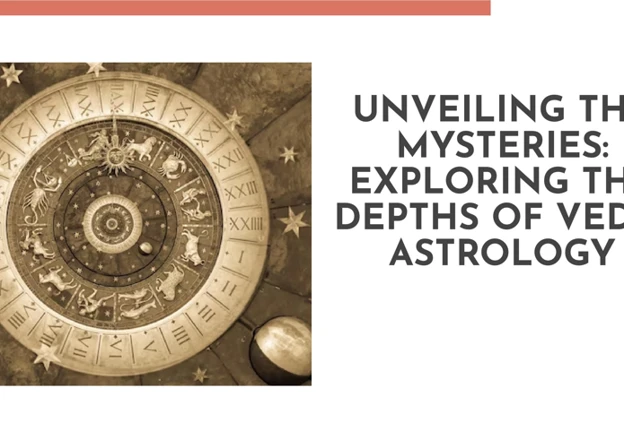Unveiling the Secrets of Vedic Astrological Predictions: Unlocking the Mystical Universe
Have you ever wondered how ancient civilizations were able to predict future events with uncanny accuracy? The ancient art of Vedic Astrology holds the key to unraveling this age-old mystery. With its roots in ancient India, Vedic Astrology provides a comprehensive framework for understanding the cosmos and its influence on human lives. This article takes you on a journey to explore the depths of Vedic Astrology, delving into its rich history, scientific principles, and practical applications. From the intricacies of astrological charts to the key principles that underpin accurate predictions, we will unravel the secrets that have captivated generations. Join us as we venture into the captivating world of Vedic Astrology and unlock the mystical universe that lies within.
The Roots of Vedic Astrology
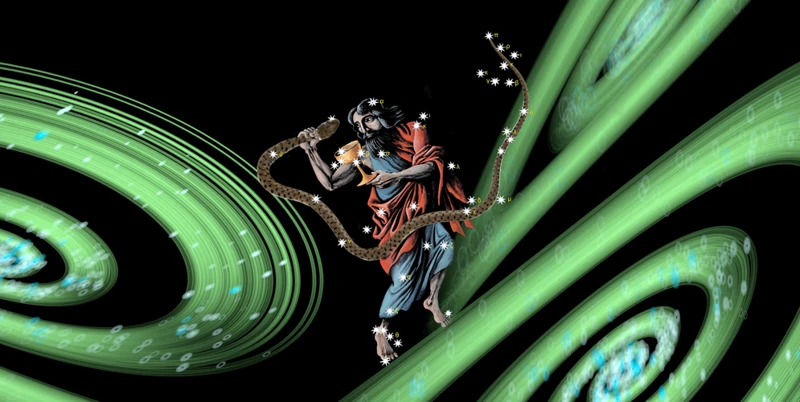
The Roots of Vedic Astrology date back thousands of years to the ancient civilization of India. Vedic Astrology, also known as Jyotish, is deeply rooted in ancient Hindu scriptures called the Vedas. These sacred texts contain a wealth of knowledge about the movements of celestial bodies and their impact on human life. The foundation of Vedic Astrology lies in the belief that everything in the universe is interconnected, and that the positions of the planets at the time of a person’s birth can provide valuable insights into their character, destiny, and life events. Ancient sages meticulously observed the stars, planets, and constellations, developing a sophisticated system of astrological calculations and interpretations. The Vedas emphasize the importance of seeking guidance from the cosmic energies and aligning one’s actions with the rhythms of the universe. This holistic approach to astrology goes beyond mere prediction and aims to empower individuals to make conscious choices and lead a balanced life. By understanding the roots of Vedic Astrology, we gain a deeper appreciation for the wisdom passed down through generations, and how it continues to shape our understanding of the cosmos and ourselves.
The Science behind Vedic Astrology
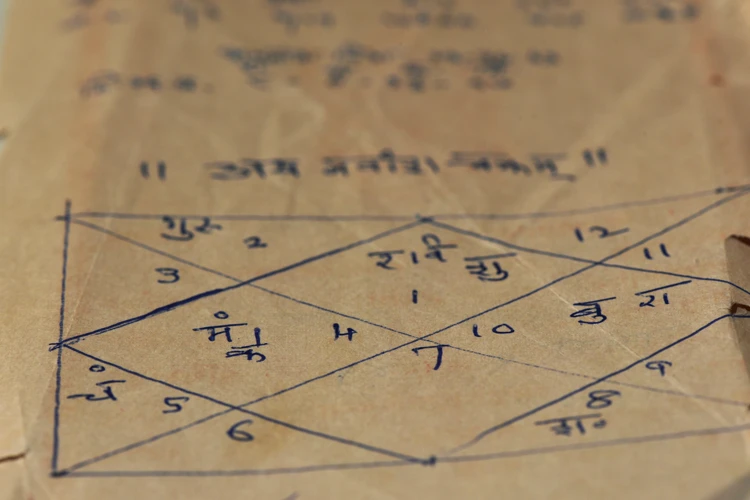
Vedic Astrology is not merely based on superstition or blind faith, but it is firmly rooted in scientific principles. The science behind Vedic Astrology utilizes precise calculations and mathematical formulas to analyze the positions and movements of celestial bodies in relation to the Earth. These calculations are made using an intricate system of astronomical algorithms that take into account the date, time, and location of an individual’s birth. The birth chart, also known as the horoscope, is the foundation of Vedic Astrology. It is a visual representation of the positions of the planets and their respective houses at the time of birth. Each planet’s placement and alignment with the zodiac signs and houses gives astrologers valuable information about an individual’s personality traits, strengths, weaknesses, and life events. The accuracy and intricacy of these calculations showcase the scientific precision that underpins Vedic Astrology. While skeptics may question the validity of astrological predictions, the science behind Vedic Astrology continues to fascinate and intrigue both believers and those seeking a deeper understanding of the cosmos and their place within it. For a more in-depth understanding of the influence of zodiac signs on astrological predictions, you can explore our article on Understanding the Influence of Zodiac Signs on Astrological Predictions.
Astrological Houses
Astrological Houses play a crucial role in Vedic Astrology, providing a framework for analyzing different aspects of a person’s life. There are twelve houses in a birth chart, each representing a specific area of life and influencing different aspects of one’s personality and experiences. Let’s explore the significance of each house:
1. The First House: Also known as the Ascendant, this house represents one’s physical appearance, demeanor, and overall personality. It is the house of self-expression and how others perceive you.
2. The Second House: This house governs wealth, possessions, and personal values. It reveals insights into an individual’s financial stability, material assets, and accumulated wealth.
3. The Third House: Known as the house of communication and siblings, it signifies one’s communication skills, courage, and relationship with siblings. It also governs short-distance travels and hobbies.
4. The Fourth House: This house represents home, family, roots, and emotional well-being. It influences one’s relationship with parents, property, and inner psychological foundations.
5. The Fifth House: Known as the house of creativity and joy, it governs love affairs, children, artistic pursuits, and intelligence. This house provides insights into one’s romantic life and creative abilities.
6. The Sixth House: This house represents health, daily routines, and service. It brings attention to matters related to work, diseases, conflicts, and the importance of a balanced lifestyle.
7. The Seventh House: Also called the House of Partnerships, it governs marriage, business partnerships, and significant relationships. It sheds light on one’s approach to relationships and the type of partner they are likely to attract.
8. The Eighth House: This house deals with transformations, conflicts, and inheritances. It represents mysteries, secrets, and matters related to death, longevity, and occult sciences.
9. The Ninth House: Known as the house of spirituality and higher learning, it governs belief systems, philosophies, long-distance travels, and higher education. This house reveals one’s inclination towards spirituality and their quest for knowledge.
10. The Tenth House: This house represents one’s career, reputation, and social standing. It governs professional achievements, ambitions, and public image. It offers insights into one’s aspirations and potential for success.
11. The Eleventh House: This house represents friendships, social networks, and gains. It highlights one’s goals, desires, and the type of friends and social circles that contribute to their growth.
12. The Twelfth House: Known as the house of endings and spiritual enlightenment, it represents solitude, hidden enemies, and subconscious patterns. This house sheds light on spiritual growth, self-reflection, and the release of old patterns.
Understanding the significance of each astrological house allows astrologers to provide in-depth astrological predictions based on the unique placement of planets within these houses. By examining the interactions between various houses, astrologers can gain a comprehensive understanding of an individual’s life, enabling them to offer guidance and insights into different areas of their existence. The interpretation of planetary placements and their relationships within the astrological houses is an art that requires years of study and experience. Mastering the art of interpreting astrological predictions based on house placements allows astrologers to unlock the secrets of a person’s past, present, and future.
Astrological Planets
Astrological Planets play a crucial role in Vedic Astrology and their positions hold significant meaning in interpreting a person’s chart. In Vedic Astrology, there are nine main planets, each with its unique characteristics and influences. The planets are considered celestial beings that emit cosmic energies that interact with human lives.
1. Sun (Surya): The Sun represents the individual’s vitality, ego, and life force. It signifies leadership, authority, and self-expression. Its placement in a person’s chart determines their core essence and purpose in life.
2. Moon (Chandra): The Moon symbolizes emotions, intuition, and the mind. It reflects our deepest feelings and emotional needs. The Moon’s placement in the chart reveals our emotional nature and how we connect with others on a personal level.
3. Mars (Mangal): Mars represents energy, passion, and courage. It governs our assertiveness, ambition, and our ability to take action. Mars’ placement in the chart shows how we handle conflicts and challenges.
4. Mercury (Budha): Mercury is associated with communication, intellect, and analytical thinking. It influences our ability to express ourselves, adaptability, and learning abilities. Mercury’s placement in the chart indicates how we communicate and process information.
5. Jupiter (Guru): Jupiter is the planet of wisdom, expansion, and abundance. It represents spiritual growth, higher knowledge, and luck. Jupiter’s placement in the chart shows our belief systems, ethics, and our capacity for growth.
6. Venus (Shukra): Venus signifies love, beauty, harmony, and creativity. It governs our relationships, social interactions, and aesthetic sense. Venus’ placement in the chart indicates our romantic inclinations, artistic talents, and material desires.
7. Saturn (Shani): Saturn represents discipline, responsibility, and life lessons. It governs karma, time, and the rewards of hard work. Saturn’s placement in the chart reveals our areas of limitation, fears, and the lessons we must learn.
8. Rahu: Rahu is a shadow planet that signifies ambition, desires, and illusion. It represents our worldly cravings and the challenges we face in attaining them. Rahu’s placement in the chart indicates areas of obsession and the need for self-discovery.
9. Ketu: Ketu is another shadow planet that signifies spirituality, detachment, and past-life influences. It represents our spiritual evolution and areas where we must let go. Ketu’s placement in the chart shows potential karmic lessons and spiritual growth.
Each planet’s placement in the astrological chart, along with its unique aspects and relationships with other planets, provides valuable insights into various aspects of our lives. By analyzing the planetary positions, astrologers can uncover hidden patterns and offer guidance regarding career, relationships, health, and more. Understanding the significance of astrological planets adds depth to Vedic Astrology and enriches our understanding of how celestial influences shape our lives.
Astrological Aspects
Astrological Aspects play a crucial role in Vedic Astrology as they reveal the energetic connections between different planets and points in an individual’s birth chart. These aspects represent the angles formed by the planets and their influence on each other. Each aspect has a distinct meaning that can significantly impact a person’s life and personality. Here are some key astrological aspects in Vedic Astrology:
1. Conjunction (0°): Occurs when two or more planets are in close proximity to each other, creating a powerful fusion of energies. Conjunctions can intensify the traits of the involved planets, amplifying their influence on the individual’s life.
2. Opposition (180°): This aspect arises when two planets are directly opposite each other in the zodiac. Oppositions often result in a tug-of-war between opposing forces, representing a need for balance and integration.
3. Trine (120°): Trines are harmonious aspects that bring about ease and flow. Planets forming a trine reinforce each other positively and create opportunities for personal growth and fulfillment.
4. Square (90°): Squares represent tension and challenges in an individual’s life. They push us to confront obstacles, learn valuable lessons, and make necessary changes for personal evolution.
5. Sextile (60°): Sextiles encourage communication and cooperation. They offer opportunities for growth and development, promoting harmonious interactions and fostering creativity.
Understanding these astrological aspects allows astrologers to paint a more comprehensive picture of an individual’s life and behavior. By analyzing the relationships between planets, valuable insights can be gained regarding strengths, challenges, and potential areas for growth. The energy and interplay of these aspects shape the complex tapestry of an individual’s life experiences and can guide in the interpretation of their birth chart.
Understanding Astrological Charts
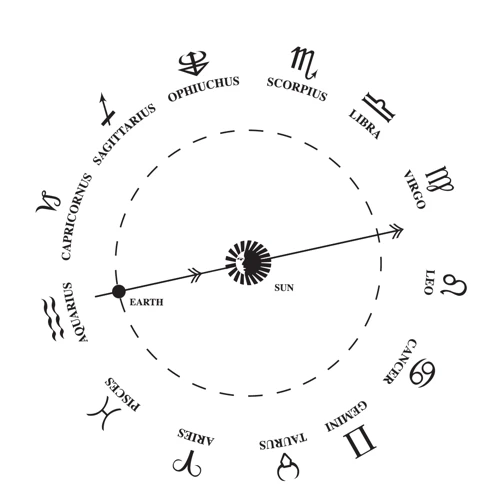
Understanding Astrological Charts is essential for delving into the realm of Vedic Astrology. These charts serve as a visual representation of the positions of celestial bodies at the time of a person’s birth and provide valuable insights into various aspects of their life. One of the most widely used charts in Vedic Astrology is the Rashi Chart, also known as the Birth Chart or the Natal Chart. This chart depicts the placement of planets and their influence on different areas of life, such as career, relationships, and health. Another important chart is the Navamsa Chart, which focuses on the finer details of a person’s life and provides a deeper understanding of their strengths, weaknesses, and soul’s journey. Additionally, the Dasamsa Chart sheds light on an individual’s professional life and career prospects. By studying and analyzing these charts, astrologers can unravel the mysteries of an individual’s life and make accurate predictions about their future. Whether through a visually appealing table or a comprehensive list, these astrological charts serve as powerful tools for understanding the complex dynamics between celestial bodies and human existence.
Rashi Chart
The Rashi Chart, also known as the Birth Chart or Natal Chart, is a fundamental tool in Vedic Astrology for understanding an individual’s personality traits, strengths, weaknesses, and life events. It is created based on the exact date, time, and place of birth. The Rashi Chart consists of twelve houses representing different areas of life, such as career, relationships, finance, and health. Each house is associated with a zodiac sign, and the position of planets in these signs provides valuable insights into various aspects of a person’s life. The Rashi Chart is a visual representation of the positions of planets and their interplay with the zodiac signs at the time of birth. It serves as a blueprint of one’s life journey, offering clues about potential challenges and opportunities that may arise. Astrologers study the Rashi Chart to analyze the planetary placements and their interactions to make predictions about various aspects of a person’s life. By understanding the intricacies of the Rashi Chart, individuals can gain deeper self-awareness and make informed decisions to navigate their life path more effectively. To gain a deeper understanding of the influence of zodiac signs on astrological predictions, refer to our article on Understanding the Influence of Zodiac Signs in Astrological Predictions.
Navamsa Chart
The Navamsa Chart is a vital component of Vedic Astrology that provides additional insight into an individual’s life and relationships. Also known as D-9, it is constructed by dividing each sign into nine equal parts, resulting in a chart consisting of nine divisions. The Navamsa Chart serves as a complement to the Rashi Chart, offering a more detailed analysis of one’s strengths, weaknesses, and destiny. Each division or Navamsa represents a specific area of life, such as marriage, career, spirituality, and health. By examining the planetary placements and aspects within the Navamsa Chart, astrologers can gain a deeper understanding of an individual’s true potential and life path. This chart plays a crucial role in determining the potential for marriage and compatibility between partners. It provides valuable insights into the harmony or challenges that may arise within a relationship. The Navamsa Chart also assists in identifying specific areas where an individual may experience both success and obstacles in their professional endeavors. It serves as a roadmap, unveiling the underlying patterns and influences that shape one’s life journey. Understanding the Navamsa Chart allows astrologers to provide more accurate and nuanced predictions, enabling individuals to make informed decisions and navigate life’s challenges and opportunities.
Dasamsa Chart
The Dasamsa Chart, also known as the D10 chart, is a crucial component of Vedic Astrology that provides insights into an individual’s career and professional life. Derived from the Sanskrit word “dasamsa,” meaning “tenth division,” this chart is divided into ten sections, each representing different aspects of one’s work and social standing. Each division is ruled by a specific planet, which influences the corresponding area of life. The Dasamsa Chart helps astrologers analyze an individual’s professional potential, identify strengths and weaknesses, and predict career milestones.
To create a Dasamsa Chart, an astrologer divides the zodiac into ten equal parts, with each division representing a specific area of professional life, such as leadership, communication, or creativity. The placement of planets in these divisions and their interaction with each other highlight the individual’s inclinations, skills, and potential for success in various career paths. For example, a strong placement of the Sun in the division related to authority and administration may indicate leadership potential, while a prominent Mercury placement in the division associated with communication could suggest a talent for writing or public speaking.
The Dasamsa Chart goes beyond simply identifying career prospects; it also sheds light on an individual’s reputation, social status, and public image. The positions and aspects of planets in this chart reveal the level of recognition and fame one may achieve in their chosen profession. It also helps determine periods of career growth, setbacks, and potential changes in professional direction.
Interpreting the Dasamsa Chart requires a thorough understanding of astrological principles and their specific application to career matters. Astrologers carefully analyze the planetary positions, aspects, and interactions, taking into account the overall birth chart for a comprehensive assessment. By studying the Dasamsa Chart, individuals can gain valuable insights into their vocational inclinations and make informed decisions about their professional path. Whether seeking guidance for career choices or navigating challenges in the workplace, the Dasamsa Chart serves as a valuable tool in decoding the intricacies of one’s professional journey.
Key Principles of Vedic Astrology
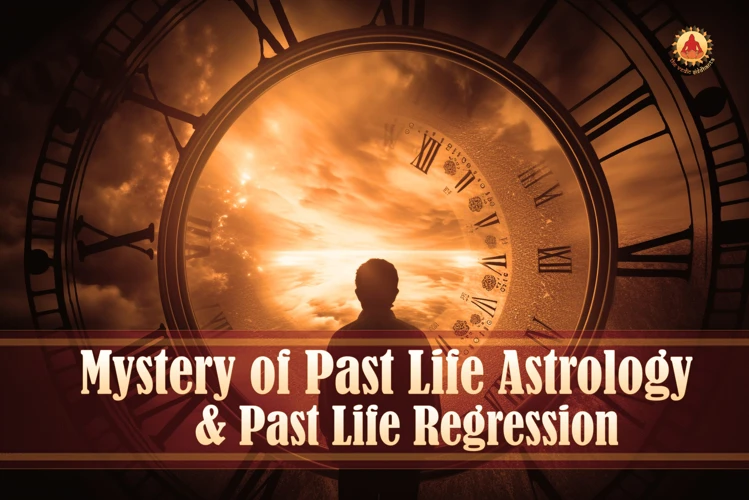
The Key Principles of Vedic Astrology form the backbone of this ancient practice, guiding astrologers in their interpretations and predictions. Karma and Destiny are fundamental concepts in Vedic Astrology, suggesting that our actions in previous lives determine our current circumstances and future experiences. The Dasha System, a unique timing system, divides a person’s life into planetary periods, each ruled by a different planet, influencing various areas of life. Nakshatras, or lunar mansions, play a crucial role in determining personality traits and compatibility in relationships. Additionally, Muhurta, the selection of auspicious timing for important events, ensures favorable outcomes. By embracing these key principles, Vedic Astrologers strive not only to foresee future events but also to empower individuals to make informed decisions and understand the deeper purpose of their lives.
Karma and Destiny
Karma and Destiny are fundamental concepts in Vedic Astrology that play a crucial role in understanding and interpreting astrological predictions. According to Vedic philosophy, karma refers to the accumulated actions and choices made over past lives and the present life, which influence our current circumstances and future experiences. It is believed that every individual is born with a unique karmic pattern that determines their destiny. Vedic Astrology aims to shed light on this karmic pattern by analyzing the positions of the planets at the time of birth. The placement of planets in different astrological houses and their interactions reveal specific karmic influences and patterns that shape an individual’s life. Understanding one’s karmic influences through Vedic Astrology offers insights into the challenges, opportunities, and lessons one will encounter in life. By embracing these insights, individuals can make conscious choices and take actions to navigate their destiny and fulfill their life’s purpose. It is important to note that Vedic Astrology does not advocate fatalism, but rather empowers individuals to become co-creators of their own destiny by aligning their thoughts, actions, and intentions with the cosmic energies. With the understanding of karma and destiny, Vedic Astrology provides a deeper perspective on the intricate tapestry of life and offers guidance on navigating its complexities.
Dasha System
The Dasha System is a fundamental principle in Vedic Astrology that provides a framework for understanding the various phases and cycles of life. It is based on the concept that different planets exert their influence on different periods of time, known as dashas. Each individual is born under a specific planetary configuration, and throughout their life, they experience the effects of these dashas as the planets move through their cycles. The Dasha System considers both major and minor planetary periods, which can range from a few months to several years. These periods are believed to have a significant impact on various aspects of life, including career, relationships, and health. The starting point of the Dasha System is determined by the placement of the Moon at the time of birth, known as the Moon Sign. This starting point sets the sequence of planetary periods that an individual will experience in their lifetime. By analyzing the dasha sequence, astrologers can gain insights into the timing of important events and potential challenges that may arise. The Dasha System is a powerful tool for astrologers to make accurate predictions and guide individuals on their life path, enabling them to navigate the cosmic energies with awareness and make informed decisions.
Nakshatras
Nakshatras hold a significant place in Vedic Astrology. These are lunar mansions or star clusters that divide the zodiac into 27 equal parts, with each part representing a specific energy or deity. Each Nakshatra has its own unique qualities, ruling planet, and symbol, which influence an individual’s personality traits and life experiences. The Nakshatras not only provide valuable insights into a person’s character but also play a crucial role in determining auspicious timings for various events and ceremonies. Each Nakshatra is associated with specific qualities and characteristics, such as creativity, intelligence, courage, or compassion. These lunar mansions also provide guidance in understanding the karmic patterns that unfold throughout one’s life. For example, if a person is born under the influence of the Magha Nakshatra, they may possess leadership qualities and a strong desire for recognition. On the other hand, someone born under the Hasta Nakshatra may have a natural flair for artistic pursuits and a meticulous attention to detail. Understanding the Nakshatras allows astrologers to delve deeper into a person’s chart and provide more accurate predictions. By recognizing the unique influence of each Nakshatra, individuals can harness their strengths and navigate life’s challenges with grace and purpose.
Muhurta – Auspicious Timing
Muhurta, the concept of Auspicious Timing, is a crucial component of Vedic Astrology that focuses on finding the most favorable moments to initiate important events or actions. In Vedic tradition, it is believed that the energy and planetary influences at a particular time can significantly impact the success and outcome of an endeavor. Muhurta takes into account various astrological factors such as the positions of the planets, the Moon, and other celestial bodies to determine the most auspicious time for a specific activity. Whether it is starting a new business, getting married, or even performing a religious ceremony, selecting the right Muhurta is considered essential for a positive outcome.
One of the key principles in Muhurta is finding a time when the planetary energies align favorably with the desired outcome. For example, if one is planning to start a new venture, the Muhurta should ideally have strong and favorable planetary positions related to success, abundance, and prosperity. On the other hand, if one is seeking medical treatment, the Muhurta should focus on planetary alignments related to healing and recovery.
To determine the ideal Muhurta, astrologers carefully analyze the positions and relationships between the planets, as well as their influence on the relevant astrological houses. They consider factors such as the ascendant sign, the Moon sign, and the planetary aspects during the chosen timeframe. These calculations help astrologers narrow down the most favorable time within a specific day or period.
Muhurta can be calculated for various activities including weddings, business inaugurations, property purchase, and even travel. It is believed that by performing important actions during auspicious timings, one can maximize the chances of success and minimize obstacles or negative influences.
It is important to note that Muhurta is highly personalized and can vary for individuals based on their birth charts and specific goals. Consulting with a knowledgeable Vedic astrologer is recommended to determine the most suitable Muhurta for each unique circumstance.
Muhurta plays a significant role in Vedic Astrology by helping individuals select the most favorable timing for important life events and actions. The ancient wisdom encapsulated in Muhurta offers a practical approach to align one’s efforts with the cosmic energies, enhancing the chances of positive outcomes and success in various endeavors. By understanding the importance of Muhurta, we can harness the power of timing and make conscious choices to create a more auspicious and fulfilling life journey.
Unraveling Predictions with Vedic Astrology
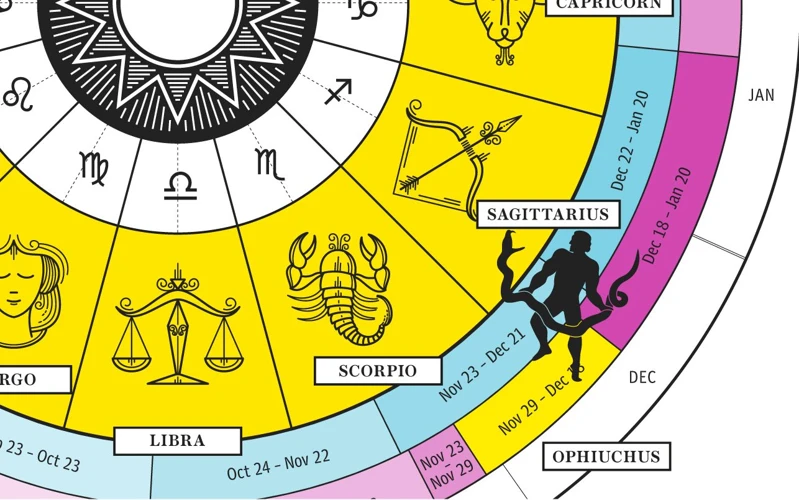
Unraveling Predictions with Vedic Astrology: A Glimpse into the Future
One of the most intriguing aspects of Vedic Astrology lies in its ability to unravel the mysteries of the future. By analyzing the positions and movements of celestial bodies in relation to a person’s birth chart, Vedic astrologers can make predictions about various aspects of life including career and finances, relationships and marriage, and even health and wellness. The key to accurate predictions lies in the intricate interpretation of planetary alignments, house placements, and planetary aspects. Vedic Astrology takes into account the concept of karma and destiny, understanding that our actions in the past and present influence our future outcomes. The Dasha system, which divides our lives into planetary periods, plays a crucial role in predicting significant events and transitions. The Nakshatras, or lunar mansions, provide further insight into specific traits and influences that shape our lives. It is important to note that while Vedic Astrology can offer valuable guidance, it should not be considered as absolute fate but rather as a tool for self-awareness and making informed decisions. As we delve into the realm of Vedic predictions, we gain a deeper understanding of the cosmos and our place within it, empowering us to navigate the ever-changing tapestry of life.
Career and Finances
Career and Finances play a crucial role in our lives, and Vedic Astrology offers valuable insights into these areas. By analyzing various astrological factors such as the 10th house in the astrological chart, planetary positions, and transits, Vedic Astrology can provide guidance regarding career choices, success, and financial prospects. The 10th house represents career and professional life, and its analysis helps identify the most suitable field of work for an individual. Planetary positions in this house reveal the potential for success, fame, and recognition in one’s chosen profession. For example, a strong placement of the Sun in the 10th house can signify leadership qualities and success in authoritative positions. Similarly, the positions of Venus and the Moon can indicate success in creative fields or public relations. Transits of favorable planets, such as Jupiter, can bring opportunities for career growth and financial gains. On the other hand, challenging aspects or unfavorable transits may indicate obstacles or setbacks in one’s professional life. By understanding the astrological influences on career and finances, individuals can make informed decisions, strategize their career paths, and navigate through challenging periods with resilience and foresight.
Relationships and Marriage
In Vedic Astrology, relationships and marriage hold significant importance, as they play a vital role in shaping our lives. The alignment of planets and their positions in the astrological chart can provide valuable insights into the dynamics of relationships and the potential for harmonious partnerships. One of the key factors considered is the seventh house in the astrological chart, which represents marriage and partnerships. The planets positioned in this house and their aspects can indicate the nature of relationships one is likely to have. For example, the presence of Venus, the planet of love and romance, in the seventh house can indicate a loving and harmonious union, while a challenging aspect with Mars may suggest potential conflicts and assertiveness in relationships. Another key factor to consider is the placement of the Moon, which represents emotions and mental compatibility. A favorable alignment with the Moon can indicate emotional compatibility and a deep understanding between partners. Additionally, astrologers also analyze the positions of the benefic planets – Jupiter and Venus – to assess the potential for a successful and fulfilling marriage. While Vedic Astrology provides valuable insights, it’s important to remember that relationships are complex and multifaceted. Astrological predictions should be used as a tool for self-reflection and understanding, rather than as a definitive answer. Building and nurturing healthy relationships requires effort, communication, and mutual respect. Understanding the astrological influences can guide individuals in navigating their relationships with consciousness and empathy.
Health and Wellness
When it comes to health and wellness, Vedic Astrology offers valuable insights into potential health issues and ways to maintain well-being. Through careful analysis of the astrological charts, Vedic astrologers can identify planetary influences that may impact an individual’s health. Each planet is associated with specific body parts and systems, and its placement in the chart can indicate potential vulnerabilities or strengths. For example, a strong and well-placed Sun can signify good vitality and overall health, while a weak or afflicted Saturn may indicate issues related to bones, joints, or chronic ailments. Astrologers can also examine the positions of the Moon and its aspects to gain insights into emotional well-being and mental health. It is important to note that Vedic Astrology does not replace medical advice or diagnosis, but can be used as a complementary tool for holistic well-being. By understanding potential health challenges, individuals can take proactive measures such as adopting a healthy lifestyle, seeking timely medical assistance, and practicing mindfulness and self-care techniques. It is crucial to consult with healthcare professionals for accurate diagnosis and treatment. By integrating the wisdom of Vedic Astrology with modern medical practices, individuals can strive towards achieving optimal health and well-being.
Combining Vedic and Western Astrology

Combining Vedic and Western Astrology: Finding Harmony in Cosmic Interpretation
While Vedic Astrology and Western Astrology have distinct origins and methodologies, there is a growing trend of combining these two systems for a more comprehensive understanding of the celestial influences on human life. This fusion allows astrologers and enthusiasts to benefit from the strengths and insights of both traditions. Vedic Astrology, deeply rooted in Hindu philosophy, emphasizes the karmic and spiritual aspects of life, and utilizes intricate calculations to determine the positions of planets and their effects on individuals. On the other hand, Western Astrology, originating from Greco-Roman culture, focuses on psychological and personality analysis, considering the positions of the planets at specific moments in time. When these two approaches are combined, a broader perspective emerges, providing a more holistic view of an individual’s personality, life events, and potential outcomes.
One of the main areas of convergence between Vedic and Western Astrology is in understanding the influence of the zodiac signs. Both systems recognize the twelve zodiac signs, each with distinct characteristics and ruling planets. However, the interpretation of these signs may vary slightly, with Vedic Astrology considering the lunar zodiac (Nakshatras) as well. By synthesizing both approaches, astrologers can provide deeper insights into an individual’s personality traits and behavioral patterns.
Another area of integration lies in the analysis of astrological predictions. Vedic Astrology utilizes various charts, such as the Rashi Chart, Navamsa Chart, and Dasamsa Chart, to understand different aspects of one’s life. Western Astrology focuses on the natal chart, which is based on the positions of the planets at the time of birth. By combining these charts and analyzing them in conjunction with each other, astrologers can provide more nuanced and accurate predictions, taking into account both karmic influences and psychological tendencies.
It is important to note that the integration of Vedic and Western Astrology requires a deep understanding of both systems and their underlying principles. Astrologers who specialize in this fusion approach have undergone extensive training and study to ensure accurate and meaningful interpretations.
By combining Vedic and Western Astrology, individuals can benefit from a broader and more comprehensive understanding of their personal traits, life events, and potential outcomes. This harmonious fusion allows for a more nuanced interpretation of celestial influences, offering deeper insights and guidance along life’s journey.
Debunking Astrological Myths
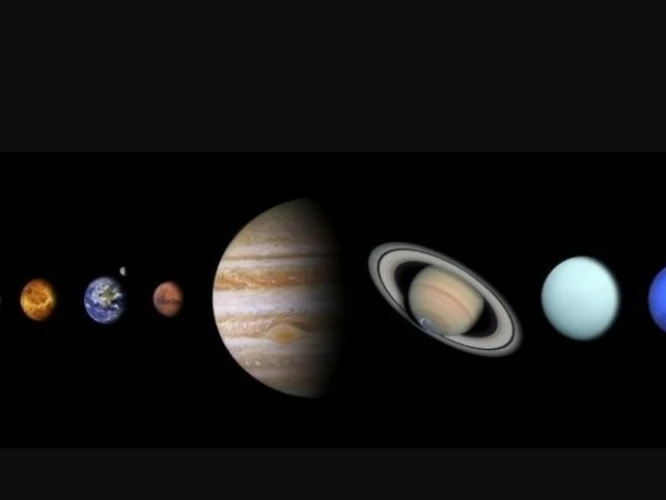
Debunking Astrological Myths
Astrology has long been surrounded by misconceptions and myths that can sometimes overshadow its true essence. In order to truly understand and appreciate Vedic Astrology, it is important to debunk these common myths.
1. Astrology is a form of fortune-telling: One common myth is that astrology is solely about predicting the future. However, Vedic Astrology is not just about foretelling events, but rather a tool for self-awareness and personal growth. It provides insights into one’s strengths, weaknesses, and life patterns, allowing individuals to make informed choices and navigate their own destiny.
2. Astrology determines everything: Another myth is that astrology is deterministic and that our lives are completely predestined. In reality, Vedic Astrology emphasizes the concept of free will. While planetary positions and alignments can influence our lives, they do not dictate our every move. Astrology serves as a guide, helping us understand our potential and make conscious decisions to shape our own paths.
3. Astrology is a science: While astrology involves intricate calculations and observations of celestial bodies, it is not considered a scientific discipline in the traditional sense. Astrology is more of an art and a philosophical system that has been refined over centuries. It draws upon ancient wisdom and intuition rather than empirical testing and replicable experiments.
4. Astrology is only for predicting major life events: Many people believe that astrology only provides insights into significant life events such as marriage, career, or health issues. However, Vedic Astrology goes beyond these traditional predictions and offers guidance for every aspect of life, including relationships, spirituality, personal development, and even day-to-day decision making.
By debunking these astrological myths, we can approach Vedic Astrology with a more open and informed mindset. It is a complex and multifaceted system that offers profound insights and guidance to help us navigate life’s challenges and make the most of our potential. Let us embrace astrology’s true essence and unlock the transformative power it holds within.
The Role of Vedic Astrology in Modern Society
The Role of Vedic Astrology in Modern Society has evolved significantly, adapting to the changing needs and interests of people today. While astrology has garnered skepticism in some circles, Vedic Astrology has maintained its influence and popularity. In modern society, Vedic Astrology serves as a tool for self-discovery, personal growth, and understanding one’s life path. Many individuals turn to Vedic Astrology for guidance in making important life decisions, whether it be choosing a career, finding a life partner, or navigating challenging periods. The principles of Vedic Astrology are believed to provide insights into the karmic influences and destiny of individuals, helping them better understand their strengths, weaknesses, and potential challenges. Vedic Astrology offers practical applications in areas such as health and wellness, where astrologers can provide guidance on maintaining physical and mental well-being based on the astrological birth chart. Its role in modern society extends beyond personal consultations, with Vedic Astrology also being integrated into various fields like business and politics. Employers may seek astrological advice when making important hiring decisions or planning business ventures. Politicians and policymakers may consult astrologers to determine auspicious times for important events or decisions. Vedic Astrology continues to have a profound impact on the lives of individuals, as well as the wider society, offering a unique perspective and providing guidance in navigating the complexities of the modern world.
Conclusion
In conclusion, delving into the world of Vedic Astrology is like embarking on a captivating journey through time and space. The secrets and insights uncovered in this ancient practice offer a unique perspective into the interconnectedness of the universe and human existence. From the roots of Vedic Astrology in the ancient Indian civilization to its profound impact on modern society, the wisdom and principles embedded within this mystical art continue to guide and inspire seekers of knowledge. The science behind Vedic Astrology, with its intricate astrological houses, planets, and aspects, provides a comprehensive framework for understanding the cosmos and its influence on our lives. The astrological charts, such as the Rashi, Navamsa, and Dasamsa, unlock the potential for deep self-awareness and guidance in various aspects of life. The key principles of Vedic Astrology, including karma and destiny, the Dasha system, Nakshatras, and Muhurta, shed light on the intricate workings of the universe and help us navigate the ebbs and flows of life. Astrological predictions hold the power to unravel the mysteries of one’s career, relationships, and health, offering valuable insights and guidance for making informed choices. Combining Vedic and Western Astrology unveils a broader perspective, bridging ancient wisdom with modern interpretations. As we debunk myths and explore the role of Vedic Astrology in society, we realize its enduring relevance and its ability to provide solace, guidance, and a deeper understanding of ourselves. Through Vedic Astrology, we learn that we are not mere bystanders in the cosmic dance, but active participants, co-creators of our destiny. So, let us embrace the awe-inspiring depths of Vedic Astrology and unlock the secrets that lie within the celestial patterns above, and within our own souls.
Frequently Asked Questions
FAQs about Vedic Astrology
1. What is Vedic Astrology?
Vedic Astrology, also known as Jyotish, is an ancient system of astrology that originated in India. It is based on the belief that the positions of celestial bodies at the time of a person’s birth can provide insights into their life events and characteristics.
2. How does Vedic Astrology differ from Western Astrology?
Vedic Astrology uses the sidereal zodiac, which considers the position of stars against the backdrop of fixed constellations. Western Astrology, on the other hand, uses the tropical zodiac based on the position of the Sun relative to the Earth.
3. What are the key components of a Vedic Astrology chart?
A Vedic Astrology chart consists of the 12 astrological houses, nine planets, and various astrological aspects. These elements interact to provide a detailed snapshot of a person’s life and potential.
4. How is Vedic Astrology used for predictions?
Vedic Astrology utilizes complex calculations and interpretations of planetary positions, aspects, and houses to make predictions about various aspects of life, including career, relationships, and health.
5. Can Vedic Astrology predict the future accurately?
While Vedic Astrology can provide insights into potential events and trends, it is important to remember that astrology is not deterministic. It can guide and inform decision-making, but ultimately, individuals have free will to shape their destiny.
6. What is the significance of nakshatras in Vedic Astrology?
Nakshatras are lunar constellations that divide the zodiac into 27 segments. They provide additional information about a person’s characteristics, temperament, and compatibility with others.
7. What is the Dasha system in Vedic Astrology?
The Dasha system is a time-based predictive technique in Vedic Astrology. It divides a person’s life into major and minor periods, each ruled by specific planets, which indicate the potential for events and experiences during those periods.
8. Can Vedic Astrology help with finding auspicious timings for important events?
Yes, Vedic Astrology places great emphasis on Muhurta, or finding auspicious timings, for events such as weddings, business ventures, and any important beginnings. It takes into account the planetary positions and combinations to determine the most favorable moments.
9. Can Vedic and Western Astrology be used together?
Yes, many astrologers integrate principles from both Vedic and Western Astrology to gain a broader perspective and deeper understanding of a person’s chart. This combination can provide a more comprehensive analysis.
10. How can Vedic Astrology benefit modern society?
Vedic Astrology offers a holistic approach to understanding oneself and the universe. It can provide guidance, insights, and a sense of connection to the cosmic energies, helping individuals make informed decisions and lead more fulfilling lives.

